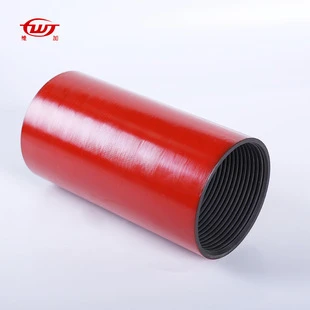- Afrikaans
- Albanian
- Amharic
- Arabic
- Armenian
- Azerbaijani
- Basque
- Belarusian
- Bengali
- Bosnian
- Bulgarian
- Catalan
- Cebuano
- Corsican
- Croatian
- Czech
- Danish
- Dutch
- English
- Esperanto
- Estonian
- Finnish
- French
- Frisian
- Galician
- Georgian
- German
- Greek
- Gujarati
- Haitian Creole
- hausa
- hawaiian
- Hebrew
- Hindi
- Miao
- Hungarian
- Icelandic
- igbo
- Indonesian
- irish
- Italian
- Japanese
- Javanese
- Kannada
- kazakh
- Khmer
- Rwandese
- Korean
- Kurdish
- Kyrgyz
- Lao
- Latin
- Latvian
- Lithuanian
- Luxembourgish
- Macedonian
- Malgashi
- Malay
- Malayalam
- Maltese
- Maori
- Marathi
- Mongolian
- Myanmar
- Nepali
- Norwegian
- Norwegian
- Occitan
- Pashto
- Persian
- Polish
- Portuguese
- Punjabi
- Romanian
- Russian
- Samoan
- Scottish Gaelic
- Serbian
- Sesotho
- Shona
- Sindhi
- Sinhala
- Slovak
- Slovenian
- Somali
- Spanish
- Sundanese
- Swahili
- Swedish
- Tagalog
- Tajik
- Tamil
- Tatar
- Telugu
- Thai
- Turkish
- Turkmen
- Ukrainian
- Urdu
- Uighur
- Uzbek
- Vietnamese
- Welsh
- Bantu
- Yiddish
- Yoruba
- Zulu
petroleum tubing coupling
Petroleum Tubing Couplings An Essential Component in Oil and Gas Operations
The oil and gas industry is characterized by its complexity and the crucial importance of reliability in its operations. One of the essential components in this sector is the petroleum tubing coupling, which plays a vital role in ensuring the efficient and safe transportation of hydrocarbons from the reservoir to the surface. This article will delve into the significance of petroleum tubing couplings, their types, applications, and the challenges faced in their usage.
What are Petroleum Tubing Couplings?
Petroleum tubing couplings are mechanical fittings used to connect sections of tubing in oil and gas production. They serve as connectors that link individual lengths of tubing to form a continuous pipeline, enabling the flow of oil or gas from the wellbore to surface facilities. These couplings are designed to withstand high pressures and harsh environments typically encountered in drilling and production operations.
Types of Petroleum Tubing Couplings
There are various types of petroleum tubing couplings, with each designed to meet specific operational requirements. Some common types include
1. Full Couplings These are used to connect two pieces of tubing with similar diameters. Full couplings have a straight bore and are ideal for creating a seamless connection.
2. Reducing Couplings Employed when different diameters of tubing need to be joined, reducing couplings facilitate the transition between larger and smaller tubing.
3. Threaded Couplings These couplings feature male and female threads that allow for the secure fastening of two tubing sections. Threaded couplings are easy to install and remove, making them widely used in many applications.
4. Welded Couplings For situations where maximum strength and leakage prevention are critical, welded couplings provide a robust solution. The connection is made by welding the pieces together, ensuring a tight seal.
petroleum tubing coupling

5. Slip-on Couplings These couplings slip over the ends of two pieces of tubing and are usually secured with screws or bolts. They are straightforward to use but may not provide the same level of integrity as welded couplings.
Applications
Petroleum tubing couplings are indispensable in various scenarios within the oil and gas industry. Their primary application is in drilling and completion operations, where they connect different pipe sections, facilitating the transportation of oil and gas to the surface. They are also utilized in maintenance and repair tasks, where existing tubing needs to be modified or extended.
Additionally, couplings are critical in the construction of pipelines that transport hydrocarbons over long distances, connecting different sections of the pipeline network. The physical strength and durability of couplings are essential to withstand the internal pressures exerted by the fluid flow and external environmental factors.
Challenges in Usage
Despite their importance, the use of petroleum tubing couplings is not without its challenges. One major concern is ensuring the integrity of couplings to prevent leaks. A failure in a coupling can lead to significant environmental hazards, including oil spills and gas leaks. Thus, maintaining high manufacturing standards and rigorous quality control during production is paramount.
Another challenge is the impact of corrosive environments, particularly in offshore and sour gas applications. Exposure to seawater, chemicals, and the corrosive nature of certain gases can weaken couplings over time. To mitigate this, manufacturers are increasingly turning to advanced materials and protective coatings that enhance corrosion resistance.
Furthermore, the maintenance of couplings is crucial for operational safety and efficiency. Regular inspections, replacement of worn couplings, and adherence to industry standards are necessary to ensure that these critical components function effectively throughout their lifespan.
Conclusion
Petroleum tubing couplings play a pivotal role in the oil and gas industry, connecting tubing sections and facilitating the safe transport of hydrocarbons. With various types available, each suited for specific applications, these couplings are essential for efficient operations. However, the industry must continuously address challenges such as integrity, corrosion, and maintenance to ensure the safety and reliability of supply chains in this vital sector. As technology advances, the future of petroleum tubing couplings looks promising, poised to adapt and meet the changing demands of oil and gas extraction and transportation.
-
Tubing Pup Joints: Essential Components for Oil and Gas OperationsNewsJul.10,2025
-
Pup Joints: Essential Components for Reliable Drilling OperationsNewsJul.10,2025
-
Pipe Couplings: Connecting Your World EfficientlyNewsJul.10,2025
-
Mastering Oilfield Operations with Quality Tubing and CasingNewsJul.10,2025
-
High-Quality Casing Couplings for Every NeedNewsJul.10,2025
-
Boost Your Drilling Efficiency with Premium Crossover Tools & Seating NipplesNewsJul.10,2025







